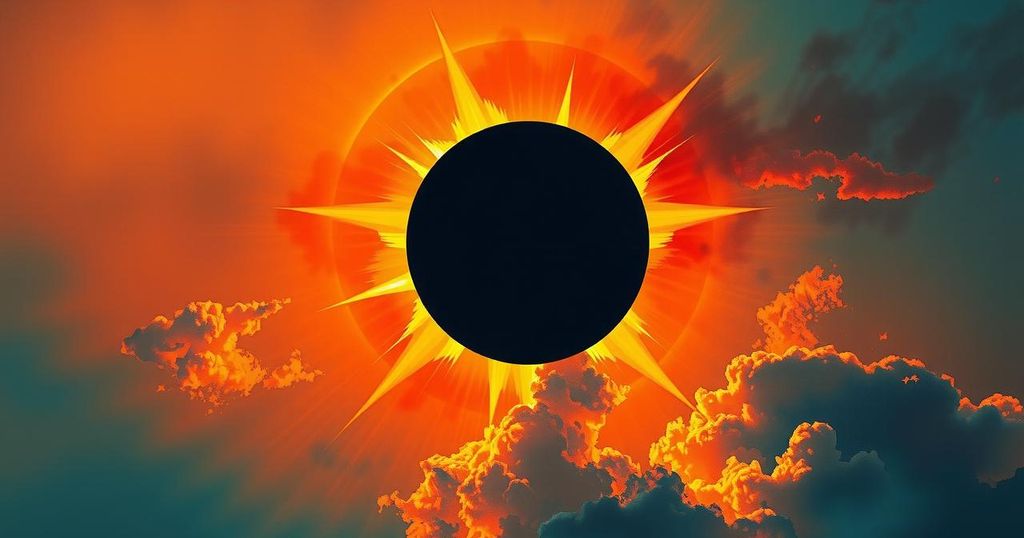Solar Eclipse 2025: India’s Invisibility to the March 29 Cosmic Event
The March 29, 2025 solar eclipse will be a partial eclipse, not visible in India due to the Moon’s shadow not crossing the country. Major visibility will be in Eastern and Northern Canada and parts of the northeastern US. Appropriate eye protection is crucial, as regular sunglasses are inadequate. The eclipse will commence at 4:50 AM EDT, peaking at 6:47 AM EDT.
The upcoming solar eclipse on March 29, 2025, is a significant event, although it will not be visible in India. The eclipse, categorized as a partial solar eclipse, means that the Sun, Moon, and Earth will not be in perfect alignment, resulting in only a small portion of the Sun being obscured. During this event, appropriate eye protection is essential, as the Sun will not be entirely covered, according to News18.
Regrettably, India will miss this astronomical phenomenon as the Moon’s shadow will not traverse the country. However, the eclipse will be observable in specific regions. Notably, Eastern and Northern Canada will experience up to 93.1% coverage of the Sun, and parts of the northeastern United States will also have significant visibility, with over 85% obscured. Other regions, including parts of Africa, Siberia, the Caribbean, and Europe, will witness lesser degrees of coverage, with Reykjavik, Iceland, seeing about 66% of the Sun obstructed.
The solar eclipse is set to commence on Saturday, March 29, 2025, starting at 4:50 AM EDT (2:20 PM IST). Its peak will occur at 6:47 AM EDT, concluding around 8:43 AM EDT. While India will experience the timing of the event at 2:20 PM IST and peak at 4:17 PM IST, the actual viewing is not feasible owing to the spatial configuration.
For safe viewing of the eclipse, one must take essential precautions. It is crucial to wear eclipse glasses or use a secure handheld solar viewer, as regular sunglasses are insufficient. Additionally, those wearing eclipse glasses should refrain from looking at the Sun through optical devices like binoculars or telescopes, which could cause severe eye injuries. Indirect viewing methods, such as employing a pinhole projector, are also recommended to mitigate any risks associated with direct observation.
A partial solar eclipse occurs when the Moon partially obscures the Sun’s disc while positioned between the Earth and the Sun. During this phenomenon, if one is situated in the penumbra—the region of partial shadow— the Sun will seem to have a “bite” taken out of it, illustrating the unique aspects of a partial solar eclipse. Understanding this event’s timing, visibility, and safety measures is important for all astronomy enthusiasts.
The solar eclipse on March 29, 2025, represents a noteworthy astronomical event, although it will not be visible in India. Significant visibility will occur in parts of Eastern and Northern Canada, the northeastern United States, and other regions. Essential safety measures, such as wearing proper eclipse glasses and avoiding optical devices, must be adhered to for safe viewing. Understanding the nature and timing of the eclipse enhances appreciation for this cosmic occurrence.
Original Source: www.hindustantimes.com




Post Comment